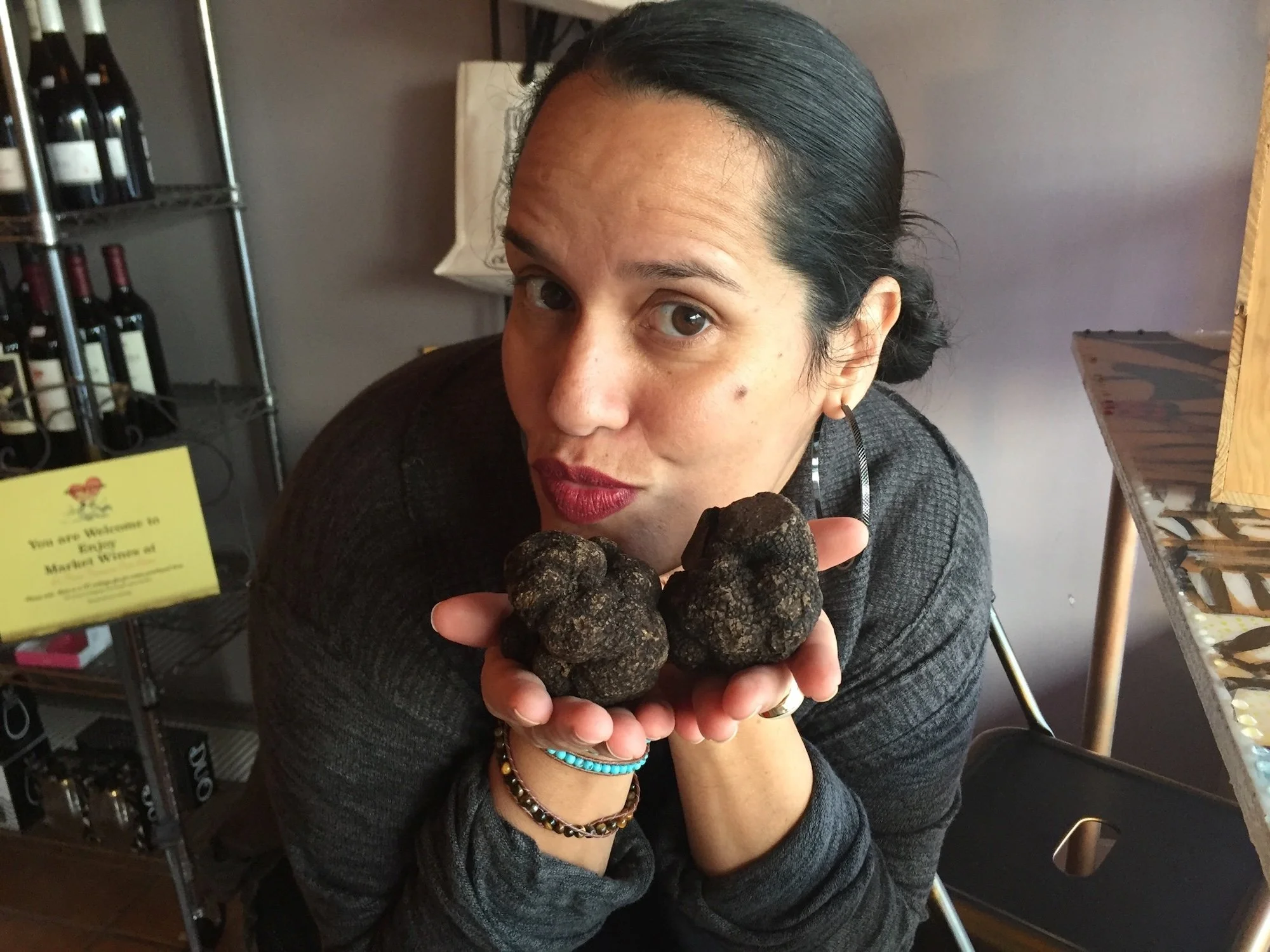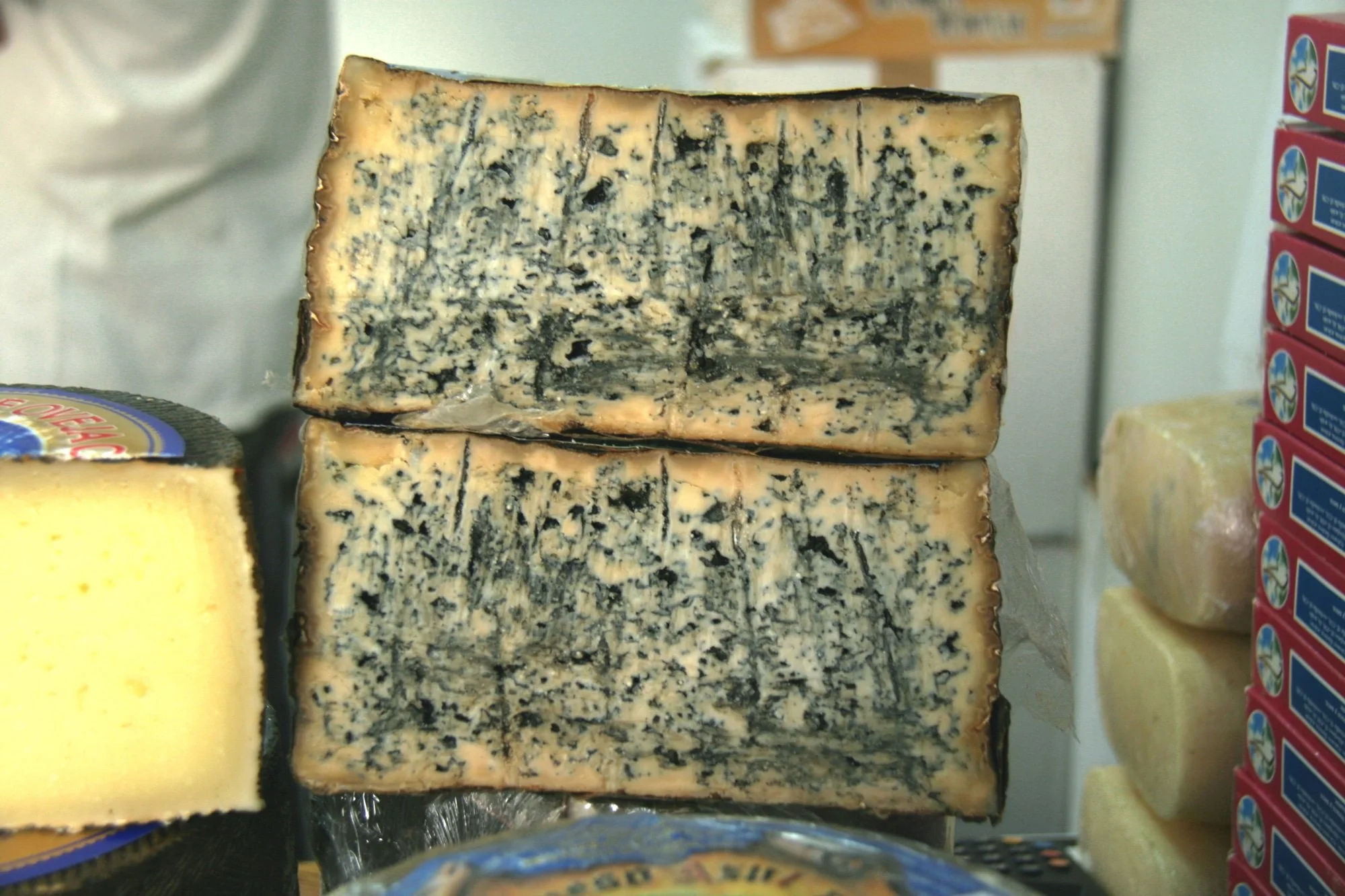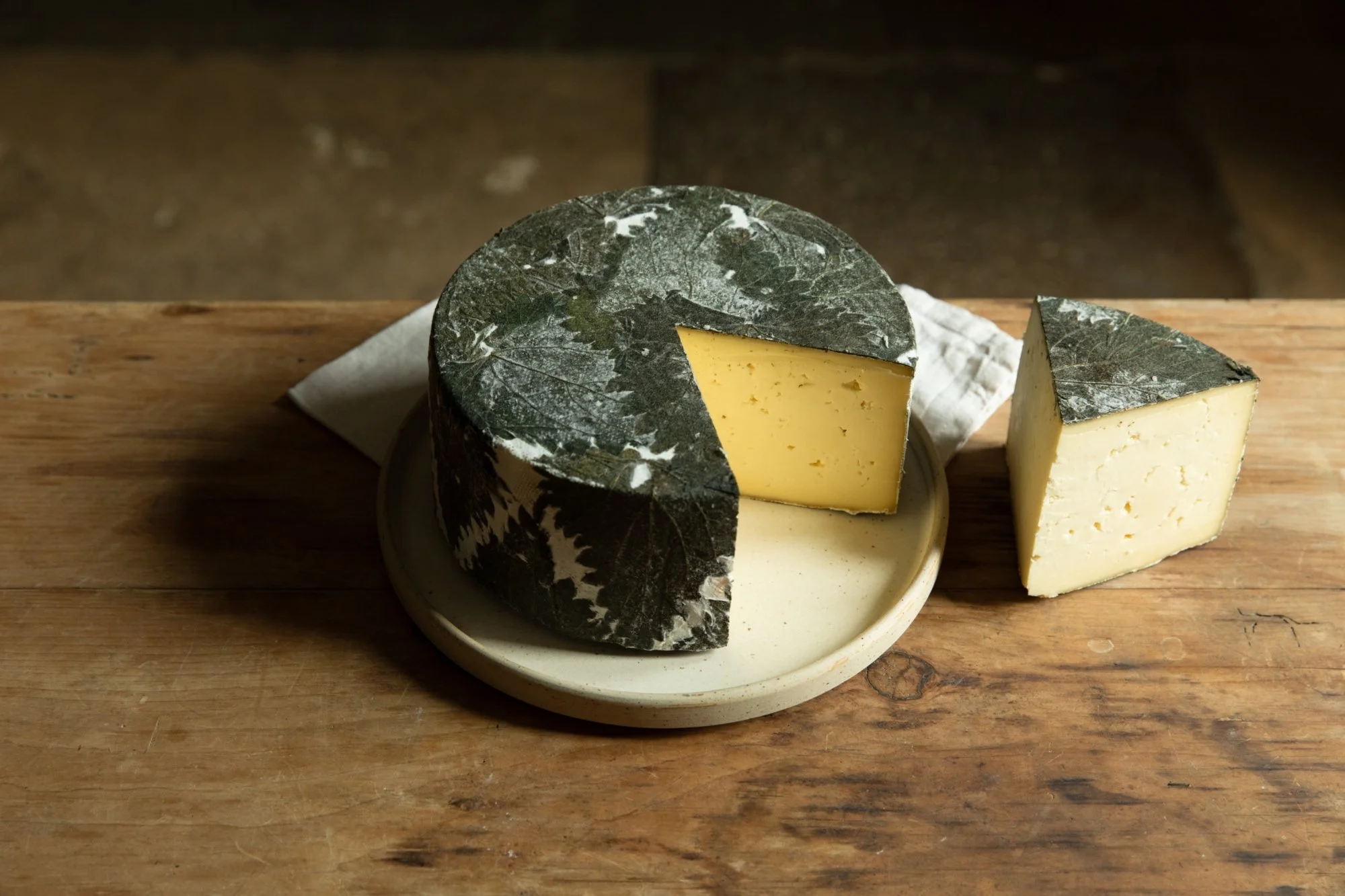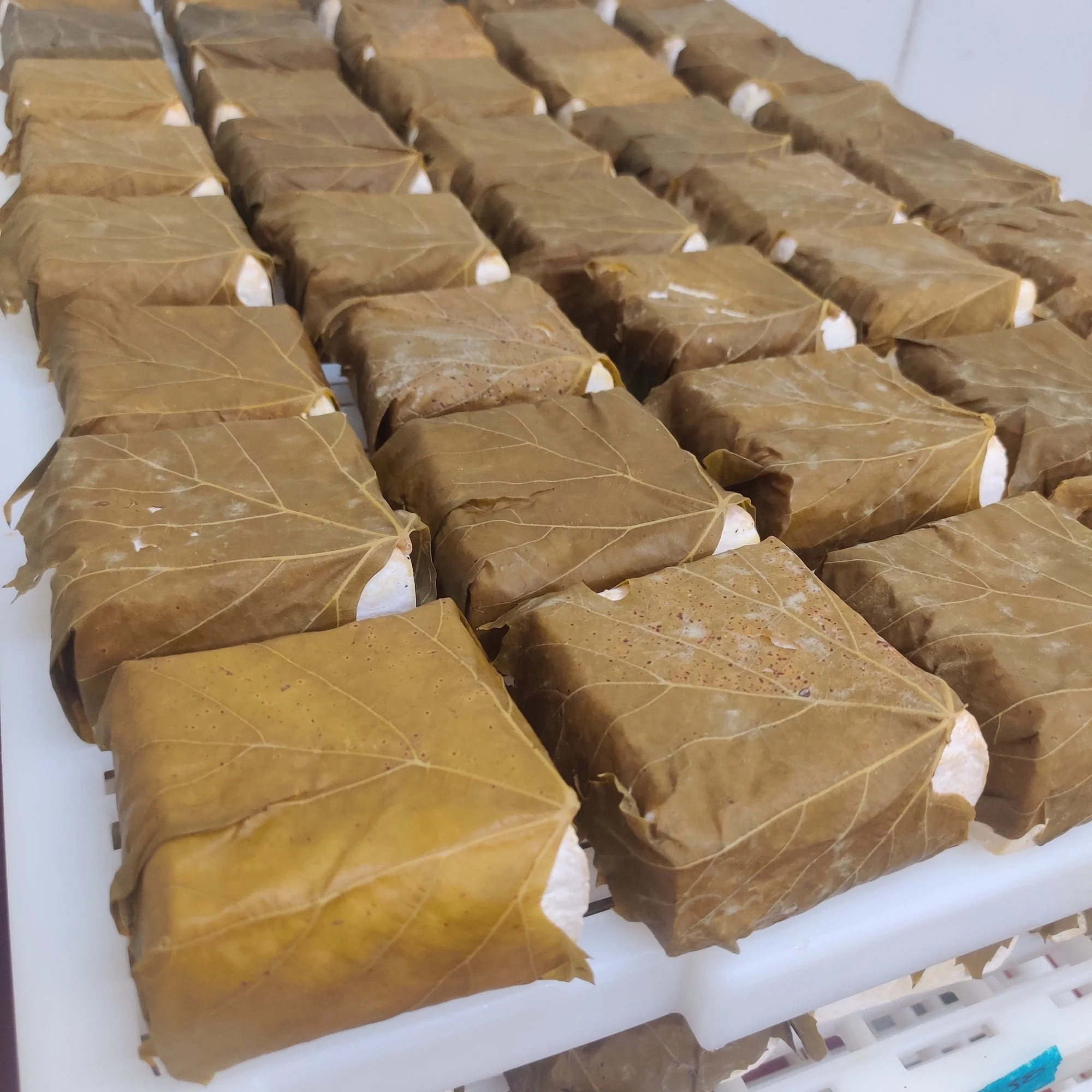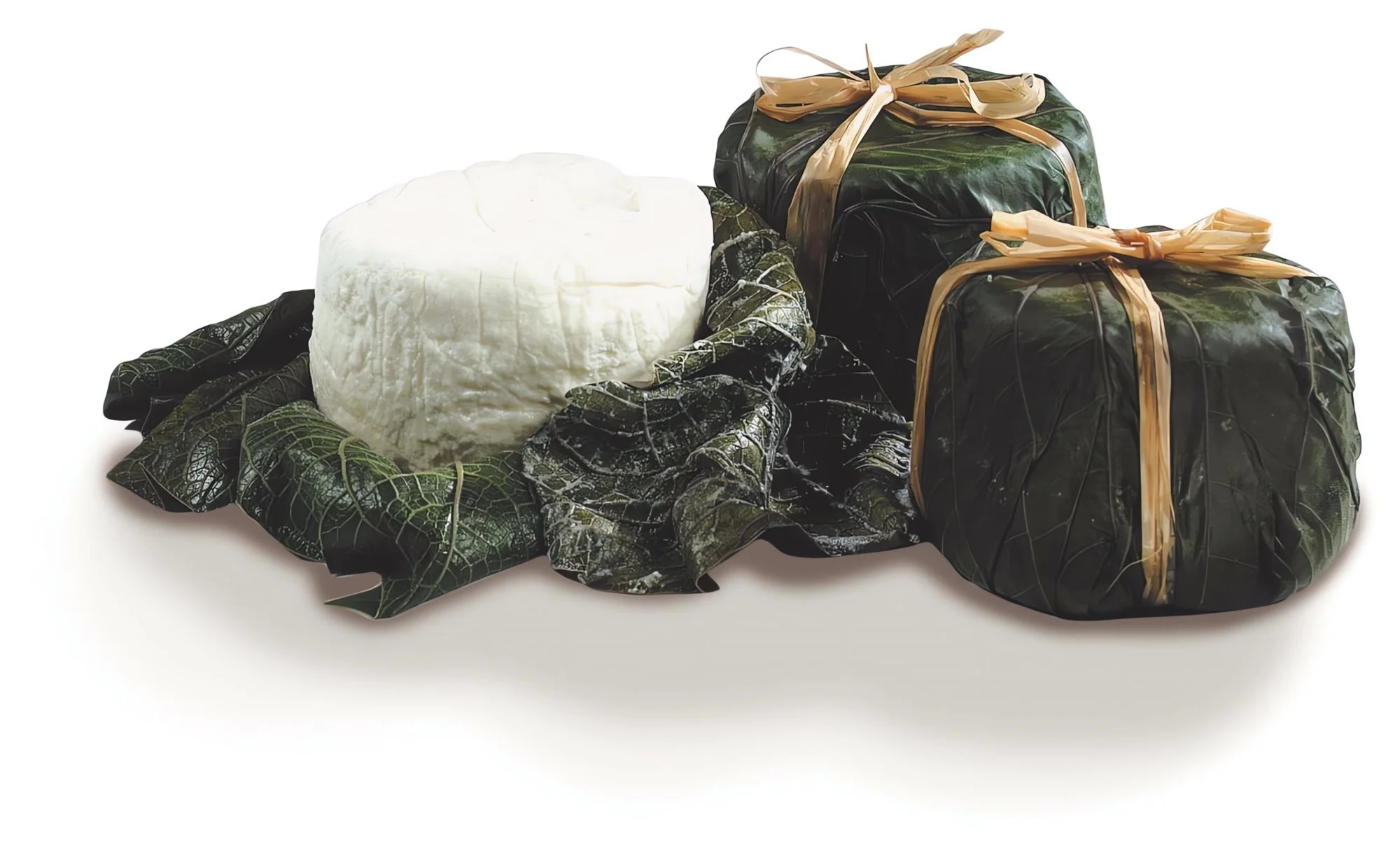Wrapped in Wonder: How Leaves Transform Cheese
Rogue River Blue photo credit Beryl Striewski
There’s something quietly captivating about a cheese wrapped in leaves. You unwrap the bundle—carefully, reverently—and it feels like revealing a secret. Inside might be a fresh, citrusy goat cheese, an earthy blue, or a dense, crumbly wheel of aged pecorino. The wrapping isn’t just for show. For many cheeses, leaves are part of the flavor, part of the story, and part of a tradition that stretches back thousands of years.
“Leaf wrapped cheeses are among the oldest forms of natural packaging,” says cheesemonger and Certified Cheese Professional Hebe Denis. "They preserve moisture, add flavor, and helped cheese survive before refrigeration."
A Natural Tradition
Hebe Denis with truffles
Wrapping cheese in leaves began as a practical response to the environment. In hot, dry Mediterranean climates—Italy, Spain, and southern France—cheesemakers turned to the materials around them to protect their creations. The leaves helped lock in moisture, slowed aging, and infused the cheese with subtle flavors.
What exactly do the leaves bring to the cheese? "It’s often subtle," says Denis. "Green, herbal notes, a whisper of tannin or smoke. The real magic happens when the cheese and leaf interact over time."
And because leaves vary from region to region, this practice created hyper-local expressions of terroir. Chestnut leaves are wrapped around French Banon. Fig and walnut leaves embrace aged Italian pecorini. Sycamore leaves lend their peppery depth to Spain’s Valdeón. The wines and spirits soaked into the leaves added even more layers of flavor.
Leaf Wrapped Cheeses
Here are a few notable examples:
Banon, France
Banon credit Coyau / Wikimedia Commons
Goat cheese wrapped in chestnut leaves, which add richness and balance the cheese's natural acidity.
Valdeón, Spain
Queso de Valdeón (León)" by Tamorlan is licensed under CC BY 3.0.
A bold blue cheese with sycamore leaves that lend earthy, mushroomy complexity.
Cornish Yarg, England
Cornish Yarg courtesy of Lynherd Dairies
A crumbly cow’s milk cheese coated in nettle leaves for a grassy, green edge. It is named for the cheesemaker, Alan Gray (Yarg, spelled backwards) and is only made by Lynherd Dairies.
Pecorino di Noce, Italy
Pecorino aged in walnut leaves photo courtesy of Forever Cheese
Sheep’s milk cheese aged for several months in walnut leaves, bringing herbal and buttery notes. Made in Emilia Romagna and imported by Forever Cheese.
Rogue River Blue, Oregon
Rogue River blue, photo courtesy of Rogue Creamery
Washed in pear brandy and wrapped in Syrah grape leaves, it tastes of sweet fruit, spice, and forest floor. It is made by Rogue Creamery.
Trilby, New Jersey
Ripe Trilby on a plate
From Cherry Grove Farm in New Jersey, this cow’s milk cheese is wrapped in bourbon-soaked fig leaves, imparting warm, boozy sweetness and a subtle smoky aroma.
Sakatah, California
Sakatah photo courtesy Alemar Cheese
A bloomy rind cheese wrapped in grape leaves pickled in apple brandy. The leaves infuse the cheese with a sweet, tangy flavor, complementing its creamy texture. Named for a lake in Minnesota, the cheese is made by Alemar Cheese, a company that was previously located in Minnesota.
Hoja Santa, Texas
Hoja Santa photo credit Mozzarella Company
This soft goat cheese is wrapped in the aromatic hoja santa leaf, native to Texas and Mexico. The leaf imparts flavors reminiscent of sassafras, anise, and mint. It’s made by Mozzarella Company.
More Than Just Flavor
Leaves can act as a kind of edible armor. They help maintain moisture, protect delicate rinds (or become the rind themselves), and moderate aging. In some cheeses, the leaves replace a rind entirely, shielding the cheese from light and air while still allowing it to breathe.
"They do a little bit of everything," Denis explains. "They hold the cheese together, let it age gently, and infuse it with character."
From Tradition to Innovation
Today’s cheesemakers are continuing the tradition of leaf-wrapping—but also reimagining it. "Modern cheesemakers can experiment in ways their predecessors couldn’t," says Denis. "They have access to global flavors and new tools."
One example: The Australian Vigneron, a soft-ripened goat cheese that breaks all the rules. It’s washed in white wine and wrapped in vine leaves. The result is oozy, savory, and complex, with a wine-kissed finish that lingers. It might be miles from the French countryside, but the spirit of tradition—and a little rebellion—shines through.
Serving & Storing Leaf-Wrapped Cheeses
A few tips:
- Wait to unwrap and discard the leaves until you’re ready to eat. This helps preserve moisture and prevents the cheese from drying out.
- Remove the leaves before eating. Most aren’t meant to be consumed—though adventurous eaters may try a nibble.
- Skip the plastic. If your cheese shop wraps it in plastic, rewrap it in parchment or cheese paper and store it in a container.
A Favorite Blue
For Denis, one cheese stands out: Rogue River Blue. "It’s fudgy and sweet, salty and silky," she says. "It’s wrapped in Syrah grape leaves soaked in pear spirits, and every bite is a journey. It’s an iconic American cheese that blends old-world technique with new-world imagination." Read more about Rogue River Blue and why it’s worthy of the hype.
That, in many ways, is what leaf-wrapped cheeses represent: a coming together of past and present, land and flavor, tradition and craft. Whether you’re unwrapping a wrinkled chestnut leaf or the deep green folds of grapevine, what’s inside is always a little extraordinary.


